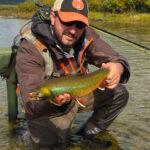The Best Anglers Never Stop Learning
The Best Anglers Never Stop Learning
The Best Anglers Never Stop Learning
The Best Anglers Never Stop Learning
I don’t get it. I’ve been nymphing for years, and I feel like I know what I’m doing, but I had one of those days on the river where nothing made sense. Perfect drift? Check. Right depth? Seemed like it. Matching the bugs I saw? Yep. I cycled through my go-to nymphs—Pheasant Tail, Hare’s Ear, Zebra Midge—nothing. Meanwhile, I watched another guy downstream pick off fish left and right. I’m starting to think I’m missing something big. What should I be looking at when my usual stuff just isn’t working?

Oh, I know that feeling. You’ve done everything right (or at least you think you have), and the fish just aren’t playing along. Meanwhile, someone downstream is putting on a clinic, and you start questioning everything. The good news? There’s always a reason. Here are a few things I check when my nymphs are getting the cold shoulder:
Next time you’re struggling, pick one of these variables and tweak it before switching flies five more times. More often than not, the answer isn’t what you’re fishing—it’s how.
"*" indicates required fields
Sign up for full access to the Learning Center
and all the FlyBrary Content.

payment methods accepted
Copyright © 2003 – 2025 MidCurrent LLC, All Rights Reserved.
Copyright © 2003 – 2025 MidCurrent LLC, All Rights Reserved.